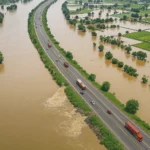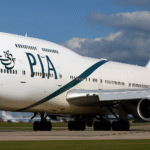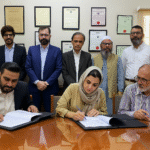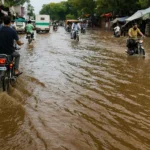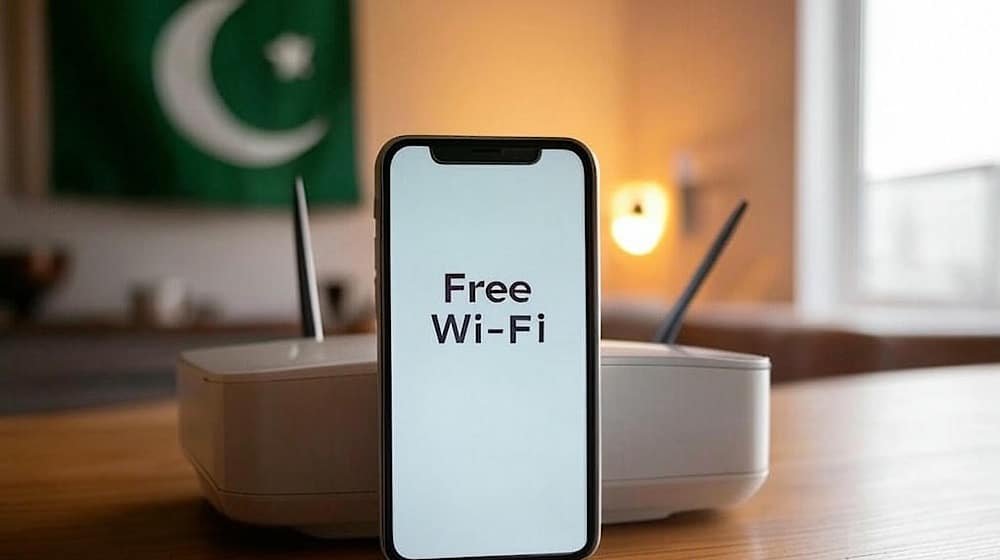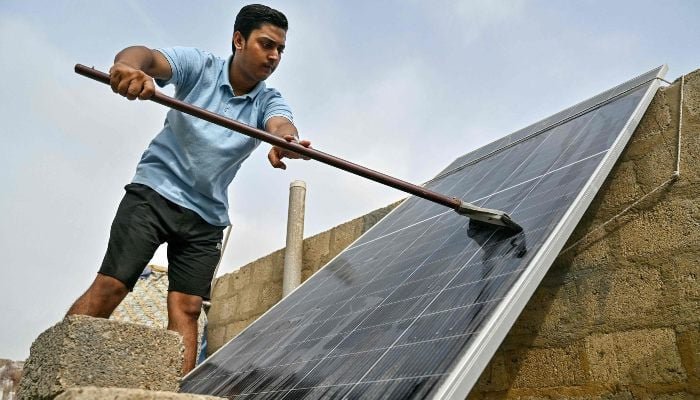Empowering Rahim Yar Khan: Punjab Government Extends Free Public Wi‑Fi to the City
In an exciting development for digital inclusion, the Punjab government has successfully launched its free public Wi‑Fi service in Rahim Yar Khan, adding another vibrant city to its growing network of connectivity hubs. This milestone marks a significant advancement in the region’s digital landscape, enabling residents—from bustling marketplace vendors to students in transit—to access the internet seamlessly and conveniently. As a result, Rahim Yar Khan now joins the ranks of other progressive cities across Punjab that are benefitting from this transformative initiative.
A Vision of Digital Access for All
This expansion of the free Wi‑Fi program aligns with the broader objective of the Punjab Safe Cities Authority (PSCA): to democratize digital access and bridge the connectivity gap across urban and semi-urban areas. Designed to serve everyday uses like quick browsing, study support, messaging, and essential online services, this initiative ensures that individuals—especially students, commuters, and small business operators—can stay plugged into the digital world whether they’re on the move or taking a break at city hotspots.
The service deliberately focuses on low-bandwidth connectivity, offering fast and reliable access for browsing, emails, social media, messaging, and light downloads, without catering to heavy usage like video streaming or large-file transfers. This selective provisioning allows the program to serve a wide user base while managing network resources efficiently, ensuring daily connectivity remains available for essential tasks.
Where the Connectivity Is: Six Prime Locations
To maximize coverage and meet the needs of various community segments, the Wi‑Fi rollout in Rahim Yar Khan covers six busy locations:
-
Adda Khanpur – A major transport hub where numerous buses, vans, and commuters converge. Offering free Wi‑Fi here empowers travelers, drivers, and vendors to communicate, plan, and navigate.
-
City Pull – A lively central area replete with shops, eateries, small enterprises, and daily visitors. Public internet strengthens local commerce and allows businesses to connect with customers digitally.
-
School Bazaar – Positioned near multiple educational institutions, this area is a hotspot for students. Internet access supports academic research and educational engagement beyond classroom hours.
-
Rahim Yar Khan Railway Station – A key intercity rail stop. Free Wi‑Fi helps passengers access travel apps, coordinate rides, or access travel-related services during layovers.
-
Jail Chowk – A bustling junction serving both locals and passersby, where connectivity boosts communication, navigation apps, and seamless access to online services.
-
Hospital Chowk – Adjacent to a major hospital, this hotspot aids patients, caregivers, and healthcare staff in staying connected, accessing medical updates, and coordinating care.
Additionally, the connectivity corridor extends along the stretch between Dari Sangi and Chak No. 72-PN, serving outlying communities, local shops, agricultural workers, and students commuting daily.
This selection of locations reflects an inclusive strategy: combining major transport nodes, educational zones, commercial centers, and health-related junctions ensures diverse user groups can benefit—whether they’re traveling, shopping, studying, or seeking medical assistance.
A Network in Punjab: Over 270 Hotspots in 11 Districts
Rahim Yar Khan now joins an elite group of 11 districts in Punjab equipped with free Wi‑Fi, spearheaded by a robust initiative from the Punjab Safe Cities Authority. The digital network includes more than 270 individual Wi‑Fi hotspots, delivering public internet access to millions of users:
-
Lahore: Over 200 hotspots alone, serving a vast population of students, visitors, professionals, and commuters.
-
Kasur and Sheikhupura: Strategically equipped to enhance connectivity in educational and commercial zones.
-
Gujrat and Sahiwal: Bringing digital services to culturally significant and economically active areas.
-
Murree: Catering to residents and tourists visiting this bustling hill station.
-
Additional cities: Rahim Yar Khan now joins other growing centers of public Wi‑Fi access.
These deployment zones highlight the government’s inclusive digital policy, ensuring that urban, semi-urban, and tourist-centric areas all gain access. By concentrating initially on Lahore, the PSCA created a successful model that they then replicated across other key districts, customizing hotspot locations to meet local community needs.
Usage So Far: Millions Connected, Hundreds of Terabytes Transferred
Since the service’s inception, Punjab’s free Wi‑Fi project has delivered remarkable impact:
-
More than 13 million unique users have accessed the network—students, shoppers, commuters, and casual web surfers alike take advantage of the service.
-
These users collectively consumed over 265 terabytes of data, reflecting regular use across browsing, messaging, academic research, and light downloads.
Breaking it down, if each user logged on only once, they would still have used an average of over 20 GB—but in reality, many are repeat users, frequently relying on these hotspots to stay online. This highlights the service’s popularity and the pressing demand for accessible digital resources in public spaces.
Why Public Wi‑Fi Matters: Reasons Beyond Access
1. Educational Inclusion
In areas where home broadband is expensive or unavailable, free public internet access bridges the digital divide for students. With connectivity at school-adjacent public hubs, learners can conduct research, submit assignments, and participate in online learning—efforts that have become vital in today’s world.
2. Economic Growth & Micro-Enterprise
Market vendors, street vendors, and small shop owners can tap into online marketing, mobile payment systems, and logistics tools via free Wi‑Fi. This opens doors for micro-entrepreneurship, wider customer reach, and better service in local economies.
3. Smart Mobility & Transport
Free Wi‑Fi at bus depots, junctions, and rail stations enables commuters and travellers to access navigation apps, booking platforms, traffic updates, and ride-hailing services—enhancing convenience and efficiency throughout the city.
4. Seamless Digital Services
Citizens no longer need to rely on expensive mobile data to access key services—everything from financial transactions to tele-health consultations and government portals becomes more accessible via public hotspots.
5. Community Engagement & Civic Education
By offering open digital access, the government facilitates informed citizenry. Public access supports awareness campaigns, emergency notifications, public announcements, and local civic engagement efforts.
6. Tourism & Cultural Engagement
In areas like Murree and potential tourist zones in Rahim Yar Khan, free public internet boosts visitor experience—tourists can explore local attractions online, share photos, read reviews, and stay connected with ease.
______________________________________________________________________
Britney Spears shares big news on social media
Read This Article
______________________________________________________________________
Technical Scope & Limitations
The service is calibrated for low- to medium-bandwidth activities, ideal for browsing, online learning, messaging (WhatsApp, Telegram, social media), and email. The system is not intended for high-bandwidth needs, such as:
-
Streaming high-definition video
-
Large file transfers (e.g., over 100 MB)
-
Voice-over-IP emergency calls
This ensures broad user access and stability across multiple simultaneous connections. The network employs scalable infrastructure with load balancing, bandwidth limits, and secure authentication portals, ensuring equitable distribution of resources and protection of user privacy. Usage rules and session time limits are in place to manage capacity and minimize misuse.
Governance, Partnerships & Monitoring
This initiative is orchestrated by the Punjab Safe Cities Authority (PSCA), under the provincial government’s smart city and digital inclusion agenda. The PSCA is responsible for:
-
Physical infrastructure deployment (routers, access points, fiber optics)
-
Collaboration with local municipalities for site selection and utility access
-
Service management, monitoring, and maintenance
-
User analytics tracking on sessions, usage patterns, and coverage effectiveness
-
Accountability benchmarks like coverage density, network uptime, average speeds
Periodic audits are conducted for network performance and functionality. Reports show that average connection speeds range from 3 to 15 Mbps, varying by location and community demand. Feedback mechanisms allow users to report issues or highlight areas needing network expansion.
Future Plans & Regional Impact
Building on the success in Rahim Yar Khan, the government plans further expansion into smaller towns and rural hubs, leveraging existing PSCA infrastructure where feasible. Considering the high usage—265 TB of data by 13 million users—it’s clear the appetite for connectivity is substantial.
Future phases may include:
-
Deeper hotspot penetration in remote rural zones and along major highways
-
Higher-bandwidth “premium” access zones at libraries, community centers, or government offices
-
Dynamic traffic shaping, e.g., allocating more speed during off-peak hours
-
Integration with e‑learning platforms, digital marketplaces, and local municipal services
The Punjab government also intends to collaborate with federal ICT ministries on a national roadmap, aiming to scale free public internet access across provinces.
User Stories & Social Impact
Personal anecdotes illuminate the tangible impact:
-
A college student shared how they rely on the hotspot at School Bazaar to research during evening hours, sidestepping unreliable mobile data service and saving on costs.
-
A commuter at City Pull loves checking transit apps and connecting with loved ones while waiting for transportation, making daily routines more efficient and less tedious.
-
Local vendors note that they now advertise products via social media thanks to access points at railway stations and junctions.
These influences extend beyond convenience—they boost opportunities, reinforce community connectivity, and offer a digital lifeline to underserved segments.
Constraints & Considerations
Despite the promise, several challenges require addressing:
-
Network Congestion
In peak hours, bandwidth per user can drop, impacting real-time services. The task ahead involves optimizing traffic prioritization—e.g., favoring messaging over downloads. -
Security & Privacy
While PSCA employs secure gateways, public Wi‑Fi networks always carry inherent threats. User awareness campaigns are vital to encourage VPN use and educate on phishing risks. -
Sustainability & Upkeep
Equipment requires ongoing maintenance, power reliability (especially in heat or power outage zones), and periodic upgrades to remain effective. -
Equitable Distribution
Ensuring that remote suburban and rural parts of Rahim Yar Khan are served requires balancing resources with urban coverage demand. -
Community Engagement
Fostering digital literacy through workshops, tutorials, and community outreach will help users extract full benefit from the network.
Measuring Success: Key Metrics
The PSCA monitors success via:
| Metric | Value |
|---|---|
| Unique users | 13 million+ across Punjab fixed hotspots |
| Data consumed | 265 TB+ since launch |
| Number of hotspots | 270+ across 11 districts |
| Launch coverage in Lahore | 200+ hotspots |
| Districts covered | Lahore, Kasur, Sheikhupura, Gujrat, Sahiwal, Murree, Rahim Yar Khan, and more likely |
| Average bandwidth (estimate) | 3–15 Mbps |
These quantitative indicators highlight the system’s reach, utility, and rapid adoption trend.
A Broader Vision: Pakistan’s Digital Journey
Punjab’s move is part of a national trend. Pakistan’s government and provincial administrations are joining efforts to offer:
-
Urban/downtown free Wi‑Fi zones
-
Smart city frameworks with cameras, sensors, and e‑services
-
Rural Broadband initiatives to empower villages and underserved towns
-
Digital skills training to promote entrepreneurship and youth engagement
The PSCA’s platform could evolve to include smart-city enhancements like public surveillance, traffic management, and IoT-based city services—augmenting current internet access initiatives.
Conclusion: A Digital Step Forward
The arrival of free public Wi‑Fi in Rahim Yar Khan is more than just a technological upgrade—it’s an investment in education, economic empowerment, community cohesion, and modern public service. In a short time, the already considerable usage figures reflect how essential digital access has become in daily life. As more cities come online under this initiative, Punjab is cementing its leadership in digital infrastructure within Pakistan.
The service’s thoughtful design—focusing on essential browsing and messaging—ensures fairness, sustainability, and broad public benefit. While challenges like network load, equipment maintenance, and security remain, proactive measures and public engagement can effectively address them.
Rahim Yar Khan’s residents—students, professionals, vendors, travelers—now carry the promise of connectivity in their pockets. This newly connected city is poised to thrive in academic endeavor, economic opportunity, and social integration. As Punjab connects city after city, each hotspot not only marks a point on the map—it lights the way toward a more inclusive, empowered, digitally connected society.



